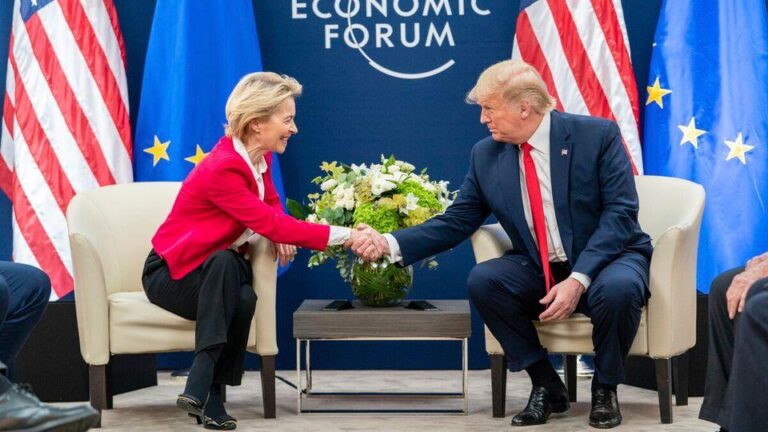Former U.S. President Donald Trump has once again criticized Chinese President Xi Jinping, describing him as “hard to make a deal with” amid ongoing tensions in the protracted trade dispute between the world’s two largest economies. In comments reflecting the strained negotiations that have marked U.S.-China relations in recent years, Trump underscored the challenges faced in reaching agreements on critical economic and strategic issues. The remarks come as both nations continue to grapple with tariffs, market access, and broader geopolitical rivalries, highlighting the complexities underlying their fraught bilateral ties.
Trump Criticizes Xi’s Negotiation Approach in Ongoing Trade Conflict
Former President Donald Trump expressed frustration over the ongoing trade negotiations with China, emphasizing that reaching an agreement with President Xi Jinping has proven to be particularly challenging. He described the Chinese leader’s negotiation tactics as rigid and unyielding, suggesting that this stance complicates efforts to resolve the escalating economic conflict between the two superpowers. Trump’s remarks highlight continuing tensions that could influence future trade policies and diplomatic relations.
Key points from Trump’s criticism include:
- Lack of Flexibility: Trump accused Xi’s team of resisting compromises on major trade issues.
- Prolonged Negotiations: He noted that extended talks have delayed potential resolution, impacting global markets.
- Strategic Posturing: According to Trump, China’s approach serves more to gain leverage than to facilitate genuine agreements.
| Aspect | Trump’s View | Potential Impact |
|---|---|---|
| Negotiation Tactics | Hard to compromise | Delays in deal-making |
| Trade Tariffs | Used as leverage | Market uncertainty |
| Diplomatic Relations | Strained | Risk of escalation |
Analyzing the Impact of US-China Tensions on Global Markets
The ongoing friction between the United States and China has sent ripples through global financial markets, highlighting the intricate dependencies within the world economy. Investors are grappling with heightened uncertainty as tariffs and diplomatic standoffs threaten key supply chains and international trade flows. Volatility in stock indices across Asia, Europe, and North America reflects this unease, with sectors such as technology, manufacturing, and commodities feeling the brunt of the trade discord. Market analysts warn that prolonged tension could disrupt growth prospects and shake confidence in emerging markets tied closely to global trade routes.
Key market reactions to the US-China dispute include:
- Commodity price fluctuations: Demand concerns have caused fluctuations, particularly in metals and oil.
- Currency instability: The Chinese yuan and emerging market currencies have experienced increased volatility against the US dollar.
- Flight to safety: Investors have shifted towards traditional safe havens such as gold and government bonds.
| Market Sector | Recent Impact | Outlook |
|---|---|---|
| Technology | Supply chain delays; stock dips | Risk of further tightening of exports |
| Manufacturing | Reduced order volumes | Potential reshoring of production |
| Commodities | Price volatility | Short-term uncertainty; possible stabilization |
Strategies for Navigating Diplomatic Challenges in US-China Trade Talks
In the complex arena of US-China trade negotiations, tactful diplomacy remains essential to overcome entrenched positions. Building mutual trust through transparent dialogue is a foundational strategy, allowing both parties to clarify expectations and reduce misunderstandings. Equally important is the adoption of flexible negotiation frameworks that accommodate incremental progress rather than insisting on sweeping solutions upfront. Establishing specialized working groups focusing on distinct economic sectors can facilitate targeted problem-solving while preventing broader disputes from stalling talks.
Another vital approach involves leveraging third-party mediation and international trade organizations to serve as neutral platforms encouraging cooperation. Continuous engagement with stakeholders, from policymakers to industry leaders, ensures that domestic pressures are managed without compromising strategic objectives. The following table outlines key diplomatic tactics alongside their potential benefits and challenges:
| Diplomatic Strategy | Benefit | Challenge |
|---|---|---|
| Transparent Dialogue | Reduces mistrust | Risk of exposing negotiable positions |
| Flexible Negotiation Frameworks | Encourages incremental progress | Can prolong overall timeline |
| Third-Party Mediation | Provides neutral ground | Dependent on mediator’s influence |
| Stakeholder Engagement | Balances domestic interests | May complicate consensus-building |
The Conclusion
As tensions between the United States and China continue to shape the global economic landscape, President Trump’s remarks underscore the ongoing challenges in navigating trade negotiations with Beijing. With both sides entrenched in their positions, the path toward a mutually agreeable deal remains uncertain. Observers will be closely watching developments in the coming weeks, as efforts to resolve the dispute carry significant implications for international markets and diplomatic relations.




